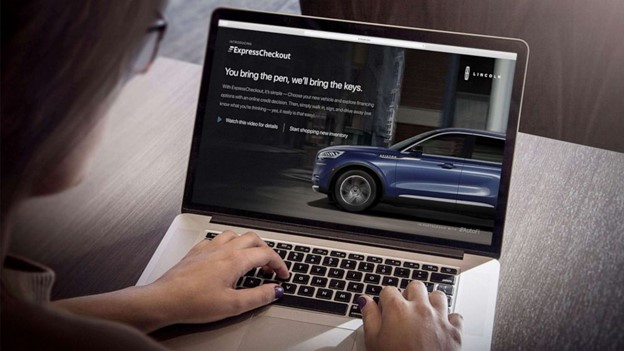Digital Banking in Africa: Origins and Development Outlook
Today, thanks to digital technology, Africa is the second largest banking market in the world in terms of growth and profitability according to a study conducted by the international consulting firm McKinsey and published in February 2018. While in most parts of the world, the banking sector is facing poor performance and sluggish growth, the African banking sector is in stark contrast as it is growing rapidly and is profitable at twice the global average.
McKinsey reveals, in this context, that the number of Africans with bank accounts has increased from 170 million in 2012 to nearly 300 million in 2017. This figure is expected to reach 450 million over the next five years. The sector’s revenues on a continental scale are expected to increase from $86 billion in 2017 to $129 billion in 2022.
However, this performance is not fairly reflected at the level of the various regions and countries of the continent. Indeed, only five African countries (South Africa, Nigeria, Egypt, Angola and Morocco) currently account for 68% of the continent’s total banking revenues. Hence the emergence of new innovative business models to overcome the many challenges facing the retail banking sector in Africa, particularly the low rate of bank-access, the massive use of cash and the weakness of branch networks and ATMs.
While traditional banks are still not widely adopted by the population, Africa is increasingly relying on digital and mobile offers. The very low number of branches, at 5 branches per 100,000 inhabitants in Africa compared to 13 per 100,000 inhabitants in emerging Asian countries, partly explains the explosion of the digital banking phenomenon. Indeed, the volume of such transactions increased by 13% per year on the continent between 2014 and 2016, thanks to improved availability, reliability and security of electronic channels. This has made Africa the second fastest growing market in the world for electronic payments after Asia-Pacific. Moreover, about 40% of Africans now prefer to use digital channels for banking transactions.
The Birth of The Digital Banks in Africa
Previously, the evolution of an African bank was noted in relation to the number of its opened branches that was observed in Morocco for example with an average of 50 openings per year. These banks mainly managed cash, and their administration was traditional.
The digital revolution began with the introduction of mobile banking by telecom operators such as Safaricom in Kenya, a subsidiary of the British group Vodafone, via its M-Pesa system, which quickly overtook the banks. In a world that had until then been very poorly banked, with an average banking rate of 5 to 15% in African countries, except Maghreb region and South Africa, mobile telecom operators have been able to use their proximity to customers and capitalize on mobile terminals, whether with basic phones called “Feature phones” using the USSD protocol or smart phones, to offer a wide range of mobile banking services.
The uses of mobile money have evolved, moving from transactional operations (cash in and cash out, bill payments, salary payments, bank to mobile transfers, etc.) to advanced financial services involving an entire ecosystem (insurance, microfinance, etc.) and supported by an increasingly developed digitalization. In 2018, there were approximately 346 million mobile money accounts registered in Africa compared to 120 million bank accounts.
M-PESA & Orange Money: Examples of Mobile Banking Success Stories
Since its introduction in 2007, M-Pesa has fundamentally transformed Kenya’s increasingly digital economy, with fast, secure and traceable transactions. A study by the Massachusetts Institute of Technology estimates that 2% of Kenyans have risen out of poverty thanks to mobile micro-credits. According to Safaricom, the platform has generated up to 2017 some 860,000 jobs, about $1 billion in economic activity (€925 million) and contributes to 6.5% of Kenya’s GDP.
Another example of remittances by telecom operators that has prompted African banks to review their sense of innovation to win new customers is Orange Money. Ten years after the deployment of its offer in French-speaking Africa, the service has 38.7 million customers in 17 countries and 13 million monthly users. In 2017, it generated €26 billion of transaction values. In Burkina Faso, this amounted to €5.2 billion in 2016, almost half of the country’s GDP. Even better, Orange Money generated revenue of €241 million in 2017, representing 5% of Orange’s revenue in Africa and the Middle East. In some countries, this service represents between 10% to 15% of the operator’s revenue, as in Côte d’Ivoire, where Orange Money has 6 million subscribers, which represents more than half of the local market.
As a result, some twenty leading banks on a continental scale have started the process of digital transformation, enabling all “traditional” banking services to be dematerialized (i.e. consultation, transfers, downloading bank statements, ordering checkbooks or online savings management) but also to propose new innovative services. This dematerialization has a triple objective: to facilitate customer procedures, win new customers and reduce banks’ management costs.
Mobile Telecom Operators and FinTech: From Competitors to Partners
In parallel, the rise of fintech has disrupted the institutional banking market for several years. FinTech, new innovative players, are imposing a new form of competition on banks in a market where competition is already high. Indeed, banks already face mobile telecom operators and companies specialized in money transfer and payment. These competitors now have a significant market share through their innovative mobile money transfer and mobile payment solutions. This predominant position would not have been possible without the important work of raising awareness and educating people, especially those with limited bank access, who are aware of the advantages of dematerialized money compared to a traditional bank account.
Faced with the innovations of operators and new players, and in a context of a booming market, traditional banks must adapt to remain competitive. As a result, new partnerships have been established between banks and telecom operators on one side and fintech on the other side to provide mobile/online financial services to their customers while benefiting from a lower cost than the bank branch network.
This is the example of M-Shwari in Kenya, a mobile lending application developed through a partnership between the Commercial Bank of Africa and Safaricom. The platform provides 80,000 consumer loans per month with only 1.9% of non-performing loans in its portfolio. Another option is to enter into a partnership with Fintech such as Jumo, which brings together data and algorithms to enable its partners, such as Barclays Africa and Old Mutual, to provide 50,000 loans per day, or Société Générale, which has called on TagPay, the world leader in digital security, to design its digital process.
Digital banking: What about Morocco?
Several years after the launch of the M-Pesa application, the digital fever has seized the banking groups, which are multiplying their investments to catch up in the field of mobile payment and online financial services. In Morocco, for example, and like its Maghreb neighbors, where central banks’ regulations are more restrictive, banks have become aware of the importance of digital technology in ensuring the sustainability of their activities.
In 2016, BMCE Bank launched Morocco’s first online banking site “BMCE DIRECT” and two years later, the bank has launched its digital think tank and its mobile payment solution DabaPay as part of its digital transformation program. In 2016, “L’Banka Lik”, the mobile bank of the Attijariwafa Bank group, was also launched. In 2018, “L’Banka lik” was able to capture nearly 7 million connections per month, positioning the group as the leader in this field with 31% of market share.
In partnership with ScreenDy, CIH Bank organized its first Hackaton (28 and 29 January 2017) as part of its “CIH Open Innovation” program, aiming at developing innovative mobile applications to reinvent the bank’s business. In May 2018, the bank launched its mobile payment solution Wepay. In 2019, CIH partnered with CFG Bank for instant interbank transfer. The bank hopes to have the concept generalized to all banks by the end of the year.
Recently, Inwi launched its mobile payment solution, called “inwi money”, on September 3, 2019, and became the first telecom operator in Morocco to offer this type of solution to the public after obtaining approval from Bank Al-Maghrib, the country’s central bank to create its perfectly autonomous payment institution. Like the existing solutions already unveiled by other operators, inwi money will allow each holder of a mobile phone, regardless of his telecom operator, to have a mobile wallet, attached to his phone number. The customer can now fund or withdraw money from his wallet in the points of sale approved by the telephone operator, or through other means such as bank transfer.
Digital banking: The Solution for Africa’s Financial Inclusion
The enthusiasm for digital banking solutions in sub-Saharan Africa is making the region a source of inspiration for the rest of the world. In this region, the low level of banking coverage associated with the rise of mobile phones has created a powerful leverage effect, while in Europe or other developed regions, the market is mature, and the population is largely banked. The banking offer is denser and more qualitative, with extensive banking networks that do not give operators the same opportunities to replace banks.
The development of 3G and the explosion in the number of smartphones users in Africa (smartphone adoption is expected to increase to 463 million by 2020, or 167 million more than at the end of 2016 – according to GSMA) are opening new opportunities and democratizing access to banking services. End customers in Africa do not have the same apprehensions as European customers about banking and are much less conservative about banking products.
In terms of disruptive innovation, the weight of the systems installed is an obstacle that is always difficult for banks to overcome. The absence of existing systems in Africa frees it from these constraints and allows it to carry out its financial inclusion projects. It is taking a technological leap forward by deploying digital banking to serve these new populations. Therefore, digital banking is the solution to traditional banking that makes it possible to overcome the shortcomings in banking infrastructures and thus accelerate financial inclusion in Africa!
Safae Laghmari – Research analyst at Infomineo
References:
https://www.forbesafrica.com/interview/2018/11/28/why-digital-banking-is-unique-in-africa/
https://www.bearingpoint.com/fr-ma/notre-succes/publications/le-digital-banking-en-afrique/
https://afrique.latribune.fr/think-tank/2018-11-05/le-digital-banking-en-afrique-tribune-796331.html
https://lematin.ma/journal/2019/digitalisation-enjeux-decisifs-banques-2019/311209.html
https://www.ovh.sn/news/articles/al206.afrique-tagpay-invente-banque-du-futur
https://www.jeuneafrique.com/mag/589438/economie/mobile-banking-orange-money-sur-tous-les-fronts/
https://www.jeuneafrique.com/mag/421063/economie/mobile-banking-success-story-nommee-m-pesa/
https://www.jeuneafrique.com/mag/589451/economie/le-mobile-money-en-chiffres/
http://leboursier.ma/Actus/3940/2019/02/23/Services-bancaires-la-revolution-Ahmed-Rahhou.html
https://www.challenge.ma/bmce-bank-lance-le-think-tank-digital-95893/
http://fr.le360.ma/economie/paiement-mobile-bmce-bank-lance-la-solution-dabapay-167124
https://www.medias24.com/inwi-lance-sa-solution-de-paiement-mobile-inwi-money-4160.html
You may also like
Warning: Undefined variable $content in /var/www/sdomains/nexatestwp.com/infomineo.nexatestwp.com/public_html/wp-content/themes/infomineo/single.php on line 235
Warning: Undefined variable $content in /var/www/sdomains/nexatestwp.com/infomineo.nexatestwp.com/public_html/wp-content/themes/infomineo/single.php on line 235
Warning: Undefined variable $content in /var/www/sdomains/nexatestwp.com/infomineo.nexatestwp.com/public_html/wp-content/themes/infomineo/single.php on line 235
Warning: Undefined variable $content in /var/www/sdomains/nexatestwp.com/infomineo.nexatestwp.com/public_html/wp-content/themes/infomineo/single.php on line 235
Warning: Undefined variable $content in /var/www/sdomains/nexatestwp.com/infomineo.nexatestwp.com/public_html/wp-content/themes/infomineo/single.php on line 235
Warning: Undefined variable $content in /var/www/sdomains/nexatestwp.com/infomineo.nexatestwp.com/public_html/wp-content/themes/infomineo/single.php on line 235








